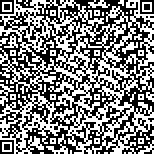|
|
|
| |
|
|
| 本文已被:浏览 276次 下载 59次 |

码上扫一扫! |
|
|
| 中成药治疗糖尿病眼病的随机对照试验文献分析 |
|
张雅姿1, 季昭臣1,2, 宋雯婷1, 王玥彤1, 胡海殷3, 彭徳慧1, 王丹蕾1, 吴晓蕾1, 史梦龙1, 金鑫瑶1, 杨丰文1
|
|
1.天津中医药大学循证医学中心, 天津 301617;2.天津中医药大学中医学院, 天津 301617;3.现代中医药海河实验室, 天津 301617
|
|
| 摘要: |
| [目的] 通过系统收集、分析和评价中成药治疗糖尿病眼病的相关随机对照试验(RCT)文献,总结其临床应用价值,为今后开展RCT研究、指南及医保政策制定提供依据。[方法] 基于中医药循证研究证据库系统(EVDS)下的中成药临床证据数据库(AICED-CPM)收录的文献,并补充检索其他8个数据库,检索时间为建库至2022年12月,依据制定的纳排标准筛选相关文献,对其发表年份、发文地区、疾病概况等方面进行整合分析与评价。[结果] 纳入中成药治疗糖尿病眼病RCT 417篇,最早发表于1998年,2017年发表数量最多51篇(12.23%),发文量最多的地区是河南。以糖尿病性视网膜病变疾病RCT数量最多。干预/对照措施以中成药+西药vs.西药最多(122篇29.26%)。90.17%的文献报告了疗程,以61~90 d为主。结局指标方面以症状体征应用最多1 011次(44.42%);经济学评估指标应用最少6次(0.26%)。方法学质量方面,仅有1.92%报告了分配隐藏;96.40%的研究受试者盲法被评为高风险。随机对照试验报告规范(CONSORT)声明分析中,417篇RCT仅有2个条目为完全报告,7个条目为未报告。[结论] 治疗糖尿病眼病的中成药应用广泛,推动了中医药治疗眼病的新进展。结局指标选取不规范,指标名称繁多,不统一,难以提供临床价值,研究设计中存在不规范、规模小等问题。应加快开展具有中医特色的核心指标体系,进一步为临床研究提供科学严谨的试验数据,样本量、试验注册、知情同意等方法学质量均存在明显不足,应提高文献研究的真实性、科学性、规范性和外推性。 |
| 关键词: 糖尿病眼病 循证医学 中医 临床评价 RCT 文献分析 |
| DOI:10.11656/j.issn.1672-1519.2024.10.11 |
| 分类号:R587.2 |
| 基金项目:中医药创新团队及人才支持计划国家中医药多学科交叉创新团队项目(ZYYCXTD-D-202204);2022年度天津市教委科研计划项目(2022KJ153);现代中医药海河实验室科技项目:中医药临床证据生产信息平台(22HHZYSS00013)。作者简介:张雅姿(1997-),女,硕士研究生在读,研究方向为循证中医学。 |
|
| Literature analysis of randomized controlled trials of proprietary Chinese medicines in the treatment of diabetic eye disease |
|
ZHANG Yazi1, JI Zhaochen1,2, SONG Wenting1, WANG Yuetong1, HU Haiyin3, PENG Dehui1, WANG Danlei1, WU Xiaolei1, SHI Menglong1, JIN Xinyao1, YANG Fengwen1
|
|
1.Evidence-Based Medicine Center, Tianjin University of Traditional Chinese Medicine, Tianjin 301617, China;2.School of Traditional Chinese Medicine, Tianjin University of Traditional Chinese Medicine, Tianjin 301617, China;3.Hai-he Laboratory of Modern Chinese Medicine, Tianjin 301617, China
|
| Abstract: |
| [Objective] Through systematically collecting,analyzing,and evaluating the relevant randomized controlled trial(RCT) literature on the treatment of diabetic eye disease with traditional Chinese medicine(TCM),this study summarizes its clinical application value and provides a basis for future RCT research,guidelines,and insurance policy formulation. [Methods] Based on the Traditional Chinese Medicine Evidence-based Research Evidence Database System(EVDS) under the AICED-CPM database of the Chinese Medicine Clinical Evidence Database(AICED),literature was collected from eight other databases,from the establishment of the database to December 2022,and relevant literature was selected according to the inclusion and exclusion criteria. The publication year,region of issuance and disease profile were integrated and evaluated. [Results] A total of 417 RCTs on the treatment of diabetic eye disease with TCM were included,with the earliest publication in 1998 and the highest number of publications in 2017(51,12.23%). The region with the highest number of publications was Henan. The RCT,in most cases,was diabetic retinopathy. The intervention/control measures with the most cases were TCM combined with Western medicine vs. Western medicine(122,29.26%). The 90.17% of the literature reported the duration of treatment,with the majority being 61 to 90 days. The outcome indicator used most frequently was symptoms and signs(1 011 times,44.42%);the least commonly used was economic evaluation indicators(6 times,0.26%). In terms of methodological quality,only 1.92% reported allocation concealment;96.40% of the study subjects were at high risk of being blinded. In the CONSORT statement analysis of randomized controlled trials(RCTs) on the treatment of diabetic eye disease with Chinese herbal medicine,out of 417 RCTs,only 2 had complete reporting,and 7 had no reporting. [Conclusion] Chinese herbal medicine for the treatment of diabetic eye disease is widely used,driving new progress in the treatment of eye diseases with TCM. The selection of outcome indicators is not standardized,the names of indicators are numerous and inconsistent,and it is difficult to provide clinical value. There are also problems of non-standardization in research design and small scale. It is urgent to accelerate the establishment of core indicators with distinctive features of TCM to provide more scientific and rigorous trial data for clinical research. The sample size,trial registration,and informed consent methods all have obvious shortcomings,and the authenticity,scientificity,standardization,and generalizability of the literature need to be improved. |
| Key words: diabetic eye disease evidence-based medicine traditional Chinese medicine clinical evaluation RCT literature analysis |
|
|
|
|
